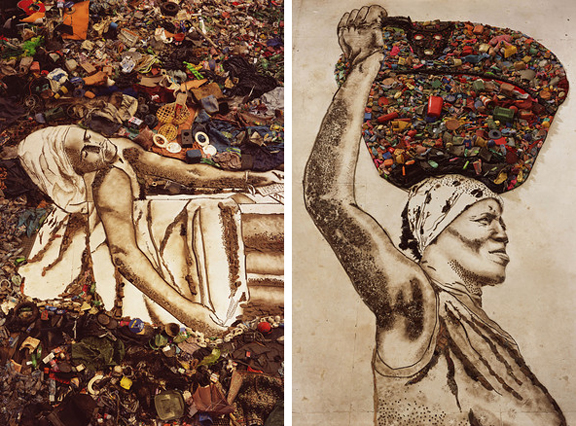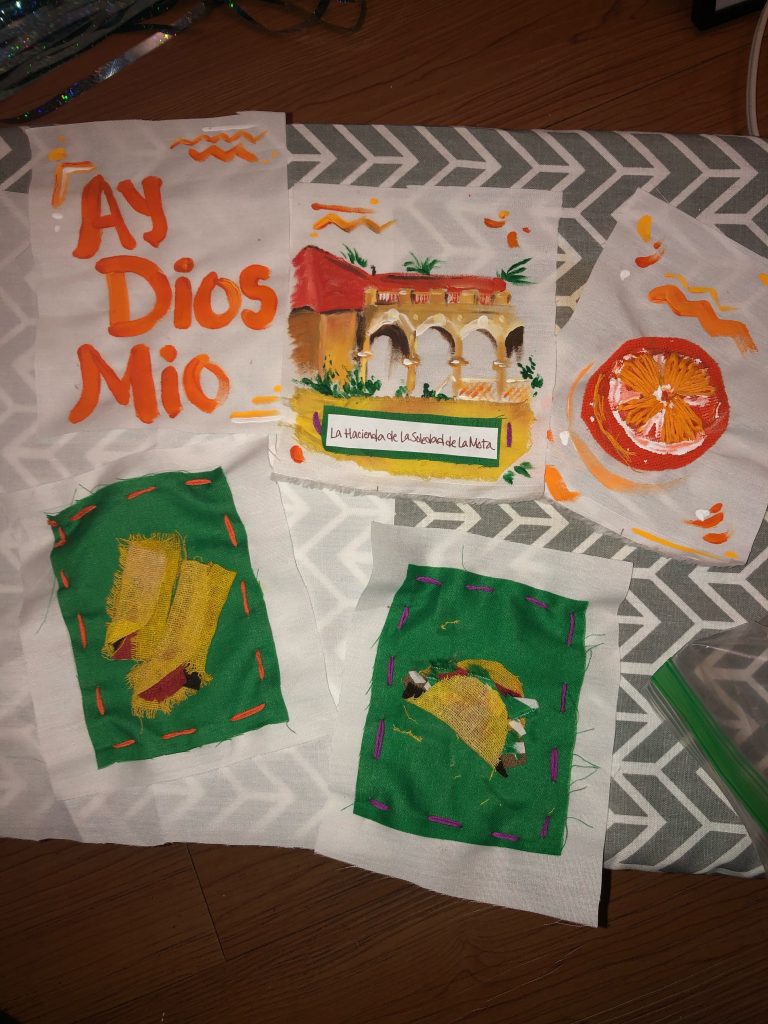
Conceptualizing family stories that have never been recorded in writing and turning abstract emotions into something tangible was difficult. I decided on a color scheme to give myself some constraints, and I also decided to make each appliqué patch a “matching pair” so that uniformity would be maintained in the final quilt.
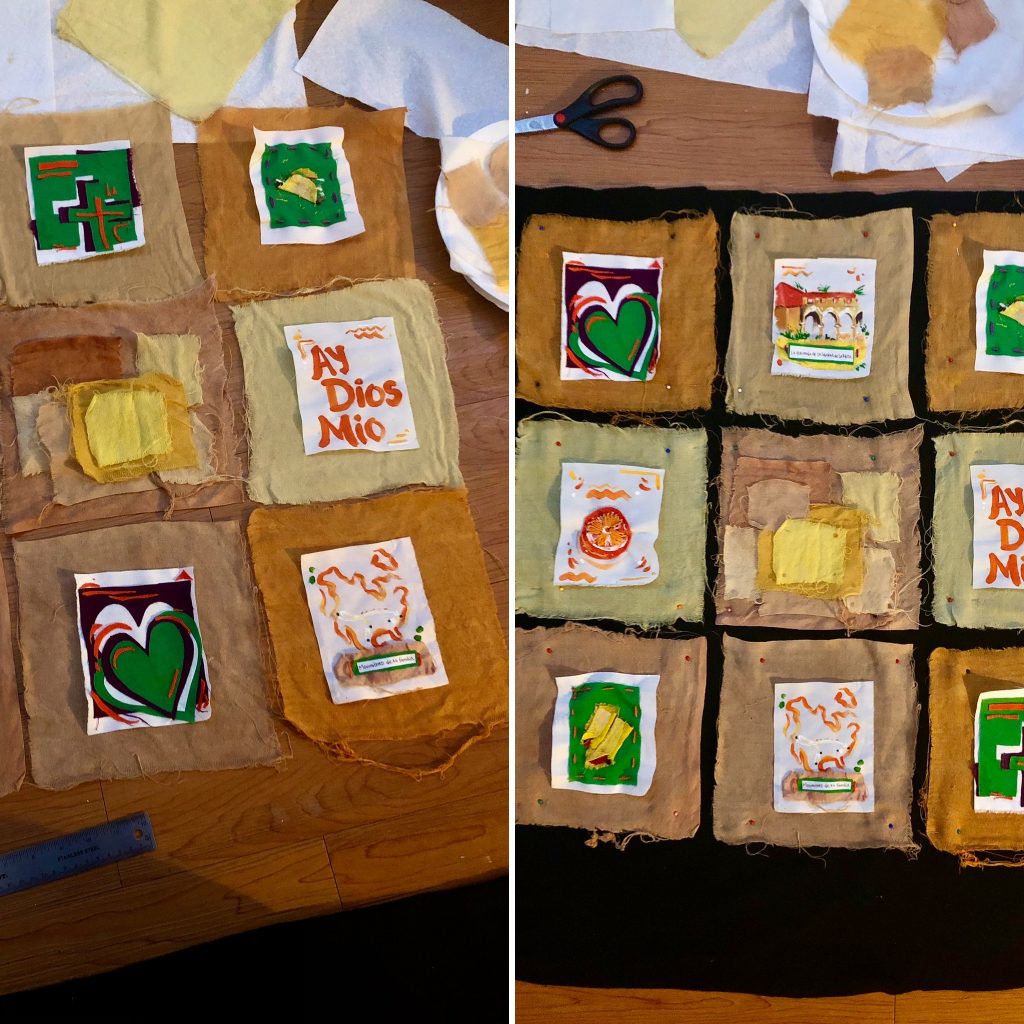
I feel the largest connection to my Mexican heritage in the kitchen, so I chose onion skins, cumin, and chili powder as some of my natural dye ingredients because they are also key ingredients in my abuelita’s famous Spanish rice. I added the skins from about 7 yellow onions and 1/4 cup of each spice to roughly 6 cups of water. I boiled and simmered the ingredients to extract the pigment and checked the color as I stirred. The onion skins colored the water bath an unexpected but fabulous deep red. I wasn’t sure what color cumin would dye my fabric, but judging from the tannish color of the simmering water, I hypothesized that it would produce a nice golden brown. I was surprised, however, when the resulting color after 30 minutes turned out to be a bright highlighter yellow. I also dyed mordanted wool squares with cinnamon and cocoa powder (ingredients in a spiced Mexican hot chocolate). Each of the wool squares remained in the dye baths for roughly 60 minutes.*
*The chili and cocoa powder squares soaked for 90 min

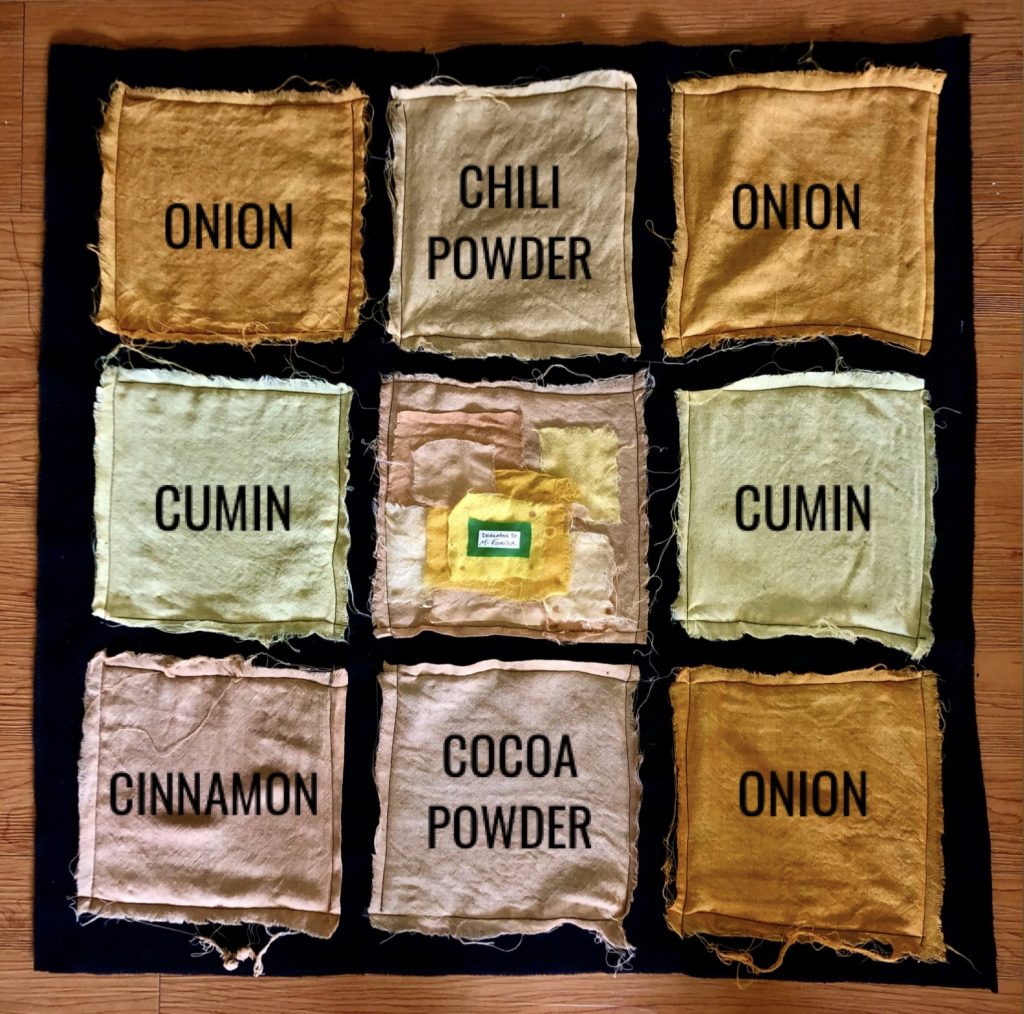
I also struggled with deciding what to do with the center square of my quilt. I ended up taking inspiration from my dye test trial scraps and collaging them into a dedication statement. I wanted the center to tie everything together. I also decided to leave the edges of my wool squares raw for this reason. The rawness speaks to my family’s dynamic, and the effect is striking against the black fleece backing.
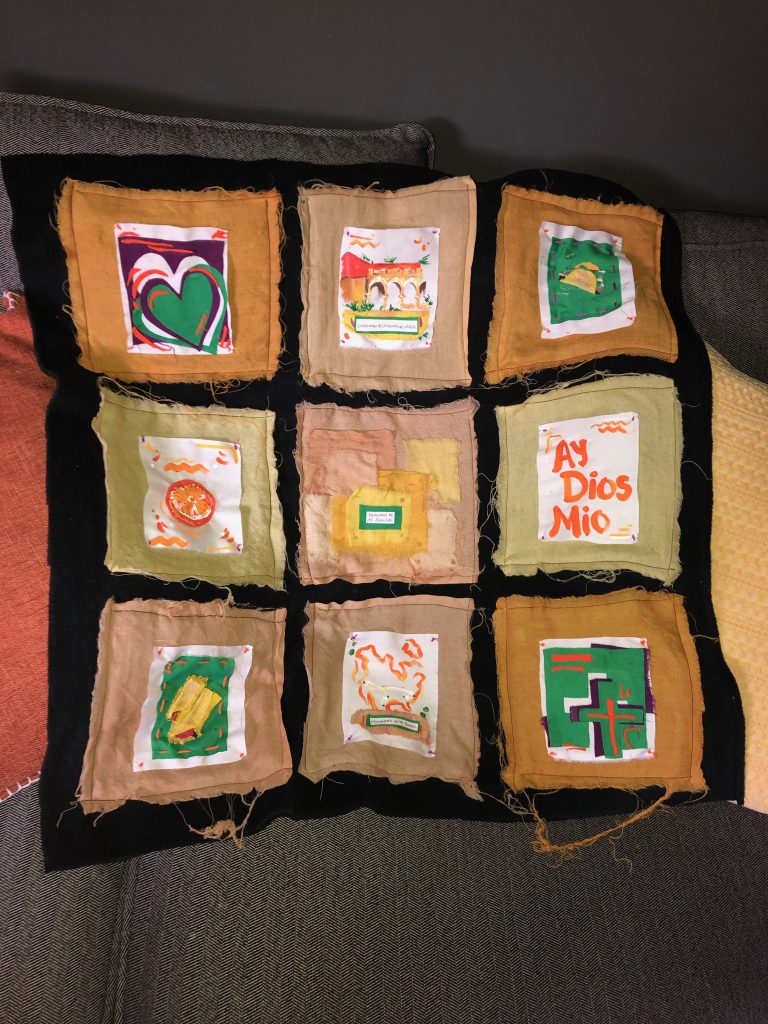
Overall, I’m really proud of this piece. I was able to use a cumulation of the skills/techniques that I learned throughout this course, and I was able to learn even more about science and history as I created it. I’m excited to share this with my family 
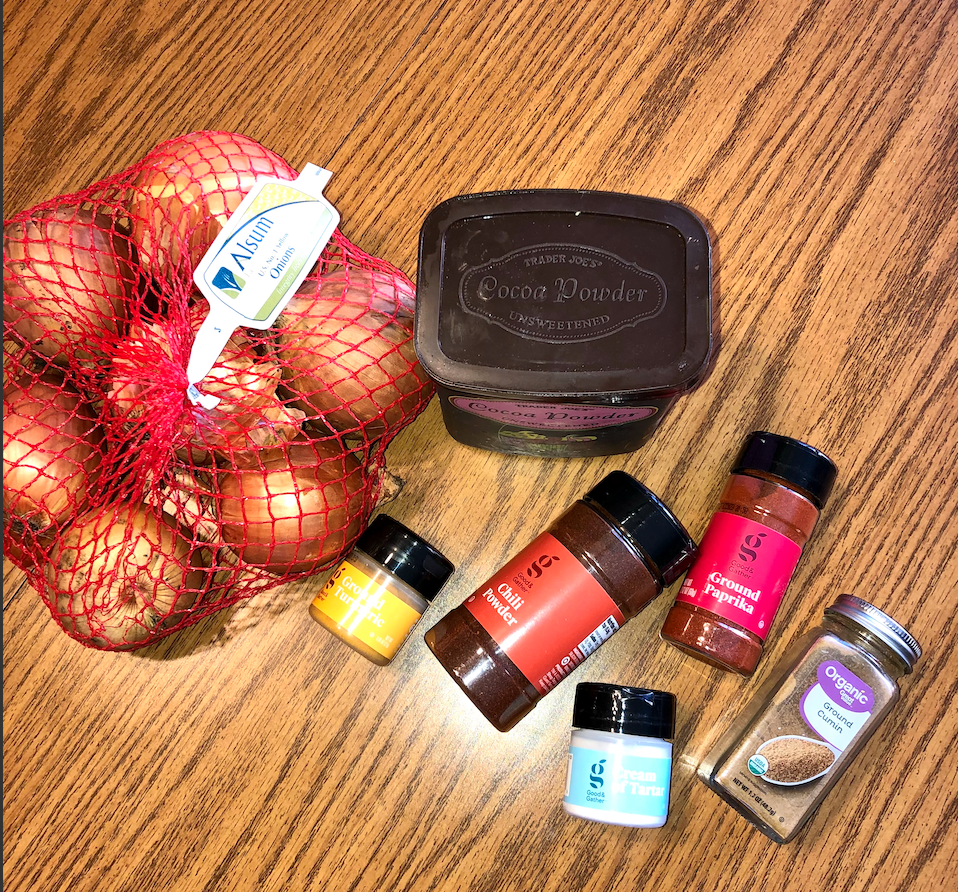
As I wait for my wool fabric to arrive, I am gathering dye ingredients. I have also secured cream of tartar to use as a mordant to prep the wool for dyeing. I looked to family recipes for dye inspiration, and found common natural dye ingredients in my abuelita’s famous spanish rice (onion, chili peppers). The rice also calls for cumin, so I’m excited to experiment with it as a pigment.
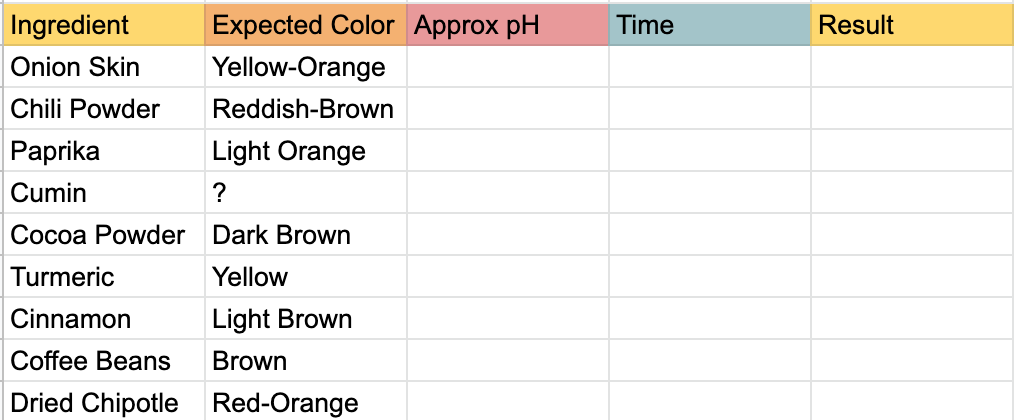
I intend on tracking my dye experiments and observations with a table. I will also be taking notes throughout the process to reference later. I should have enough fabric for a couple extra squares for more trial and error. A yard of 45″ wide wool will give me about 10-20 squares (9-10″). I will most likely scale the size of the quilt down, however, to make it more of a manageable wall hanging art piece.
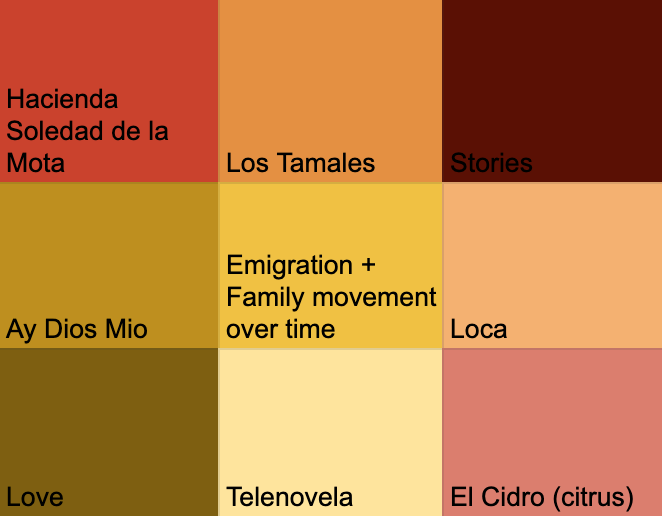
I’ve had a lot of great conversations with my family and heard a lot of crazy stories over the past few days. I’m excited to tell an interpretive story about my family through history. I’m working on creating these symbols to use as appliqué and considering using embroidery techniques to embellish the final quilt. I like that I’ll be able to expand and continuously add on to this quilt if I choose to do.
]]>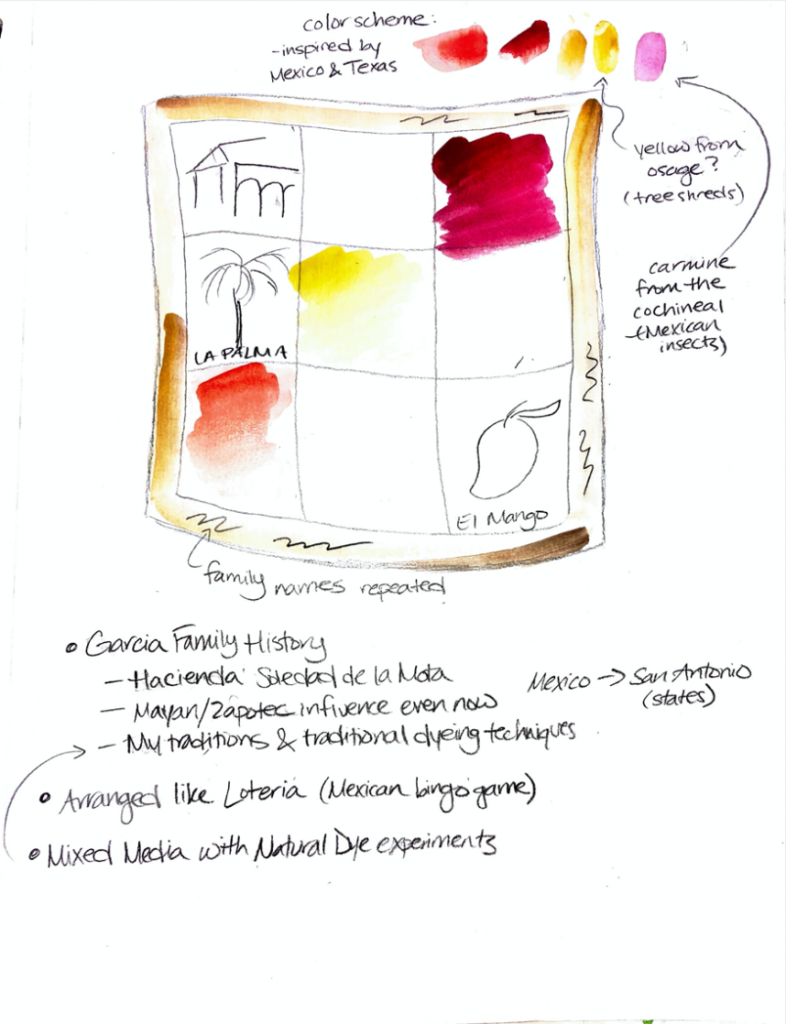
The core concept behind this project is discovering my family’s history and presenting pride in my Mexican heritage through textiles. I want to also use this as an opportunity to experiment with natural dyes. I specifically want to experiment with natural dyes traditional to Mexico such as cochineal insects (carmine/red) and osage tree shreds (yellow) and different mordant techniques. This will give me a better understanding of how the practices of ancient civilizations continue to influence textiles today. I’m also interested in exploring the dyeing process with ingredients used in Mexican cuisine that are familiar to me. I will be dyeing ~9 squares of fabric made with fibers conducive to the natural dyes I choose, and then I will be sewing them together to make a quilt.
In terms of composition, I am thinking about pulling inspiration from La Loteria to arrange images/patterns that represent my family and our history. My abuelita gave me the dramatic and thrilling story of La Hacienda Soledad de la Mota which I’m excited to dive into. I had no idea that I was in any way connected to it, and the imagery I choose will reflect these types of discovered symbols. I’m still trying to decide how I should create these designs, but I might be able to use ap·pli·qué.
Timeline:
11/29- Dyeing Ingredients Gathered/Prepped
12/4- Dyeing Process Complete
12/6- Quilting/Assembly Finished
12/8 – Final Stitching & Details
12/10- Final Presentations
]]>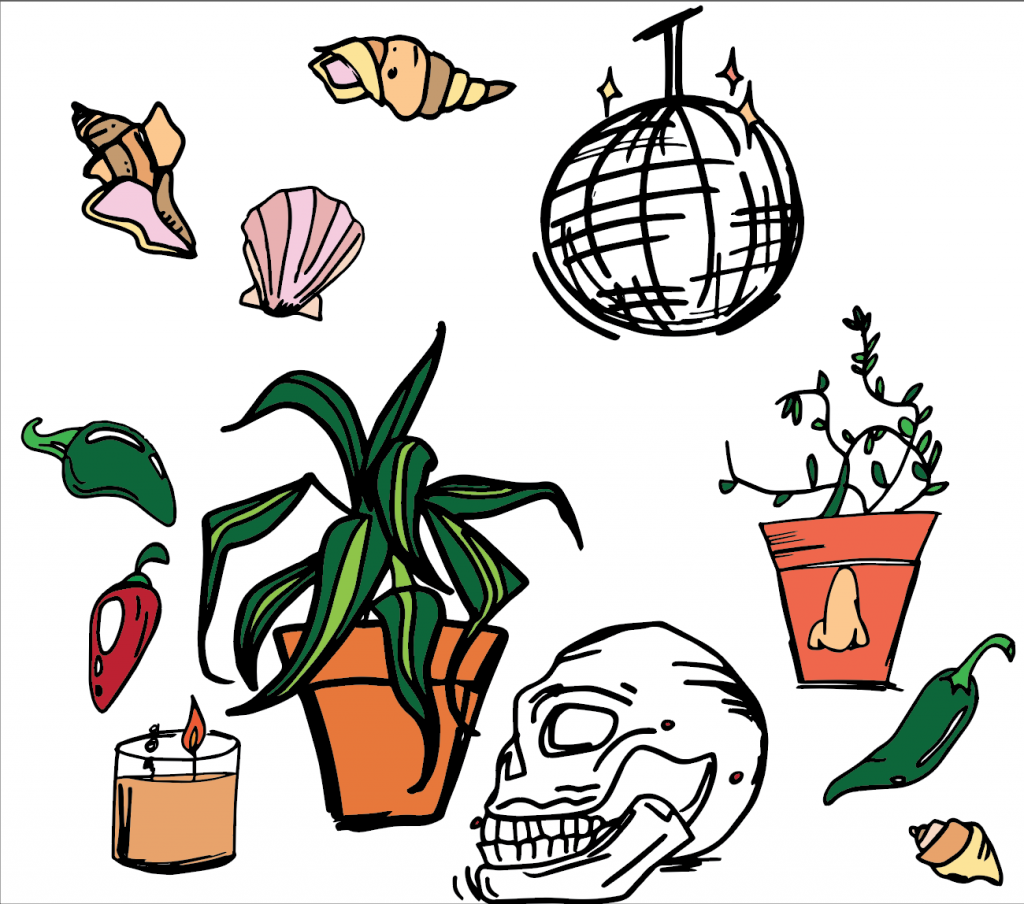
I wanted to create a pattern that had more overlap and integration between each repeated piece. I made new sketches drawing inspiration from my apartment including the potted plants on my windowsill, the decorative shells on my bookshelf, and the halloween lights that have become a staple wall decoration. I then colored and arranged these vector components in an effort to blend feelings of stress and release.
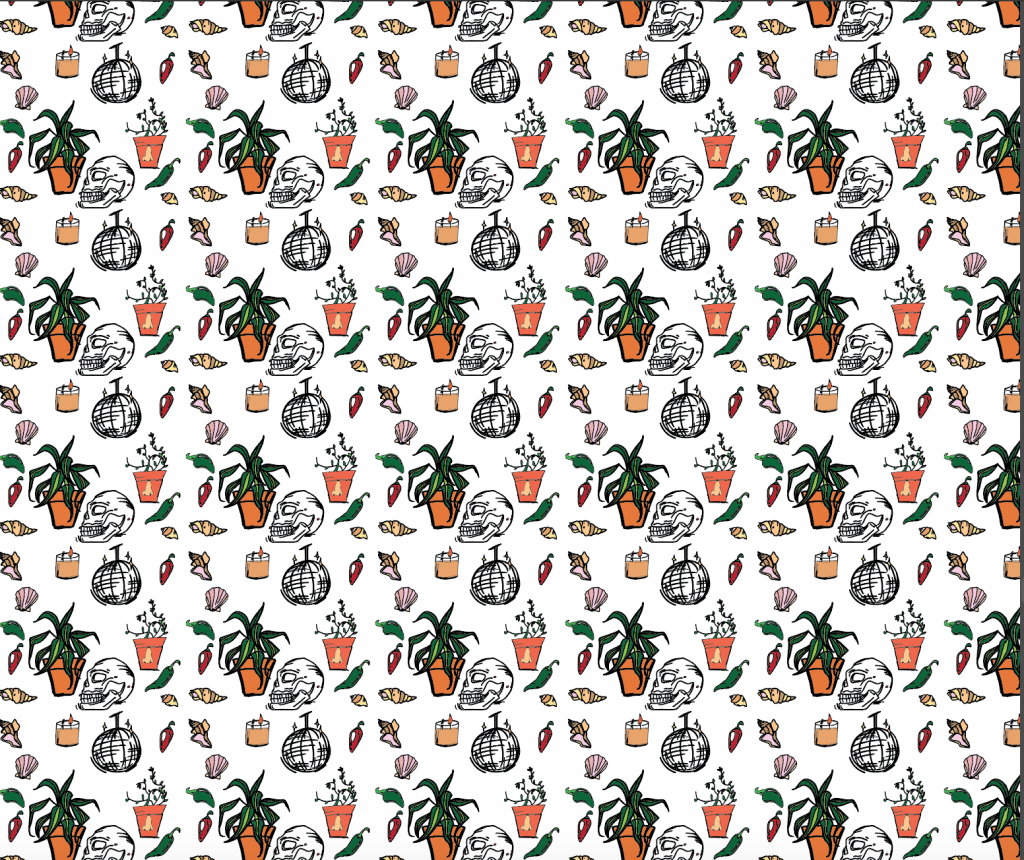
My environment has become both a place to take exams and to relax. It’s a place to seriously work and to seriously socialize. It can be both overwhelming and comforting, and the objects and colors I chose to repeat convey this duality. I also played around with the placement of my components in order to make the best use space and to create additional patterns. I can see this pattern working nicely as a tablecloth that complements my surroundings.
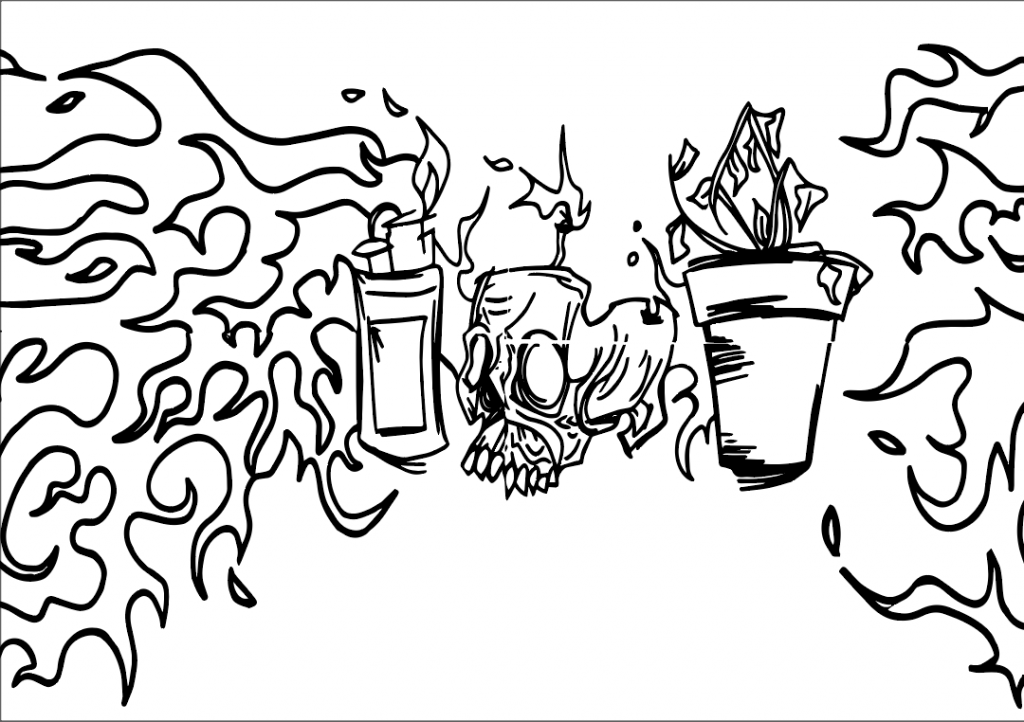
I also made a secondary repeat pattern using the technique we first tried in class. I focused on the same elements of my environment as the first pattern, but I cut the new design into 4 squares so that I could create a continuous flame. This effect of this reminds me of the fan airflow pattern we looked at in class, and I was pleased with the final result. I found it challenging to decide how to lay the tiles, but I discovered through trial and error that the Brick by Row tile type allowed me to create the most natural pattern overall.
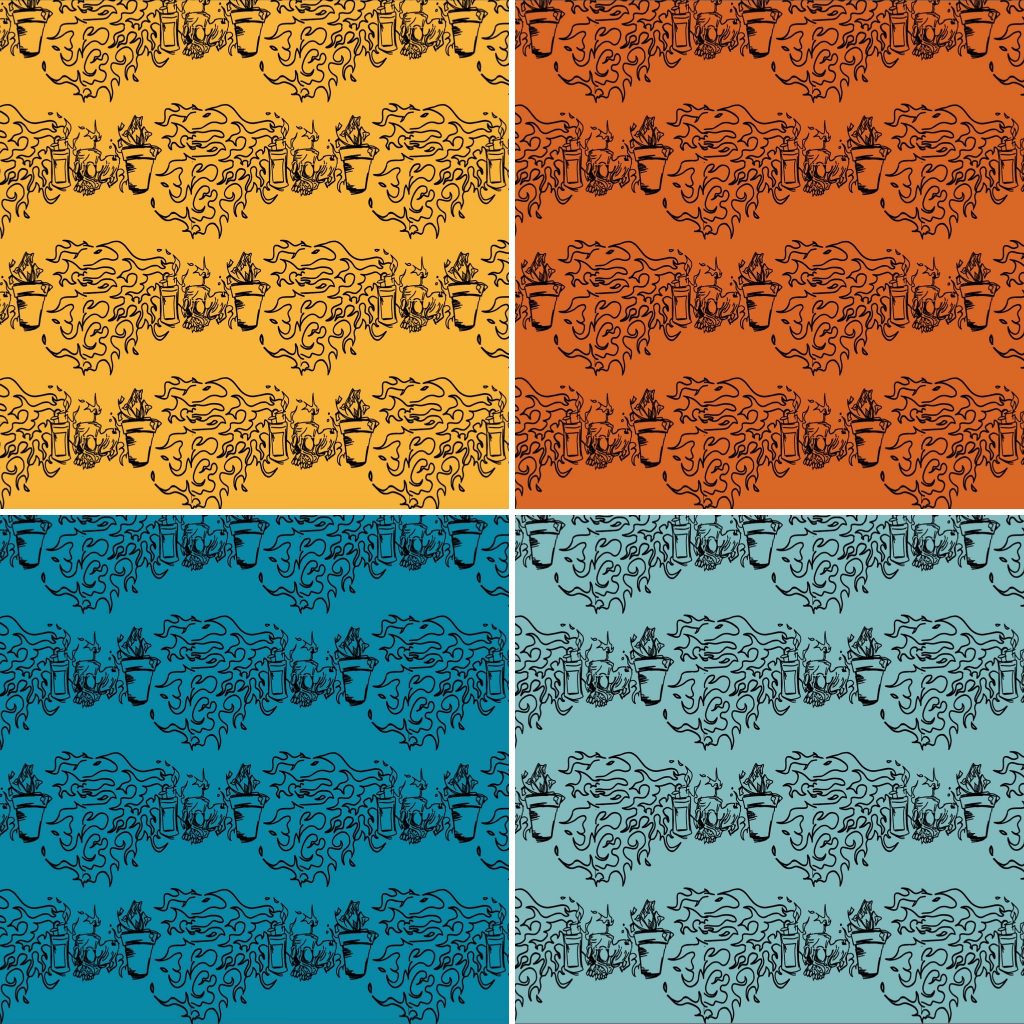
I’m really enjoying how changing the background from warm to cool colors shifts the energy of the pattern. I think this pattern would work well on a bandana or other wearable.
]]>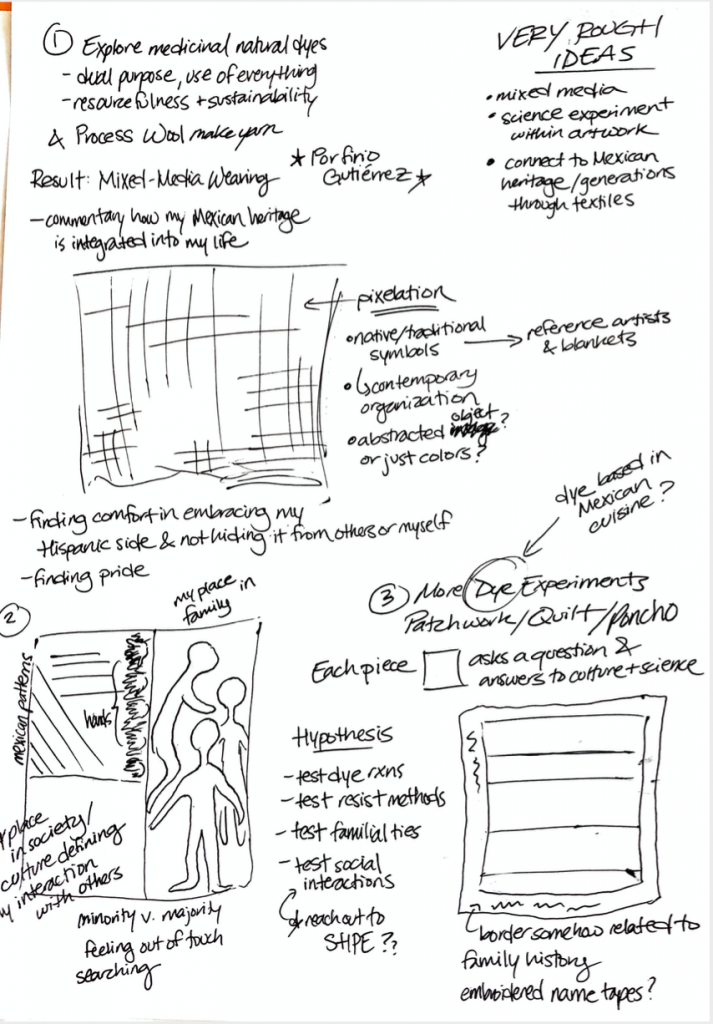
My three sketches are still very loose and undefined, but the gaps in design will be filled with meaningful symbols that connect me to my Mexican heritage. This course has given me the unique opportunity to explore chemistry through textiles, so I also want to turn this into a research project that allows me to test technical and cultural hypotheses. I am still unsure of the scale of this project, but I’m entertaining the idea of creating a single larger piece such as a quilt/poncho as well as creating a series of smaller wall-hanging pieces.
]]>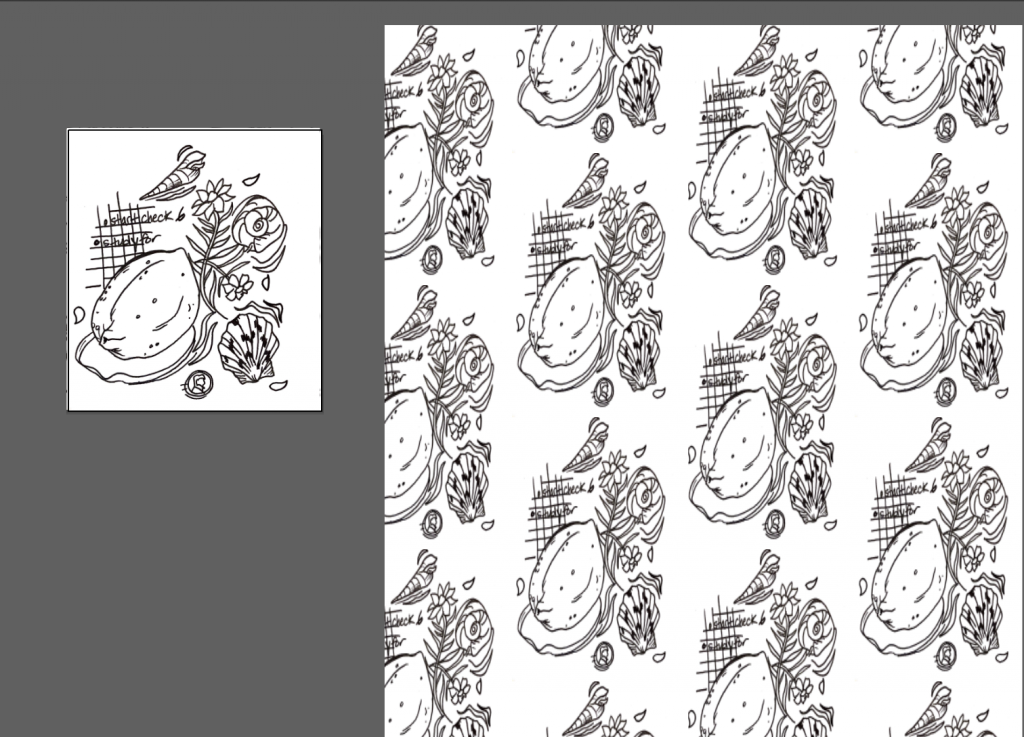
I chose to respond to the third prompt because I want my pattern to reflect elements of my routine and engagement with my environment. I also used the framework of the camouflage prompt as inspiration to look around for objects that may not typically be drawn repeatedly together. For my first pattern, I overlapped serendipitous objects such as shells, pennies, and flowers over a lemon and part of a To-Do list. Conceptually, I’m liking the idea of extracting beauty from the mundane. I can easily imagine this pattern on a tablecloth for my kitchen table where I spend a lot of time completing silly little daily routine tasks.
The hexagonal layout of this pattern works well with the shapes. I’m still getting used to the Illustrator tools, but I was pleasantly surprised by the formation of a triangle between the repeated stray petals.
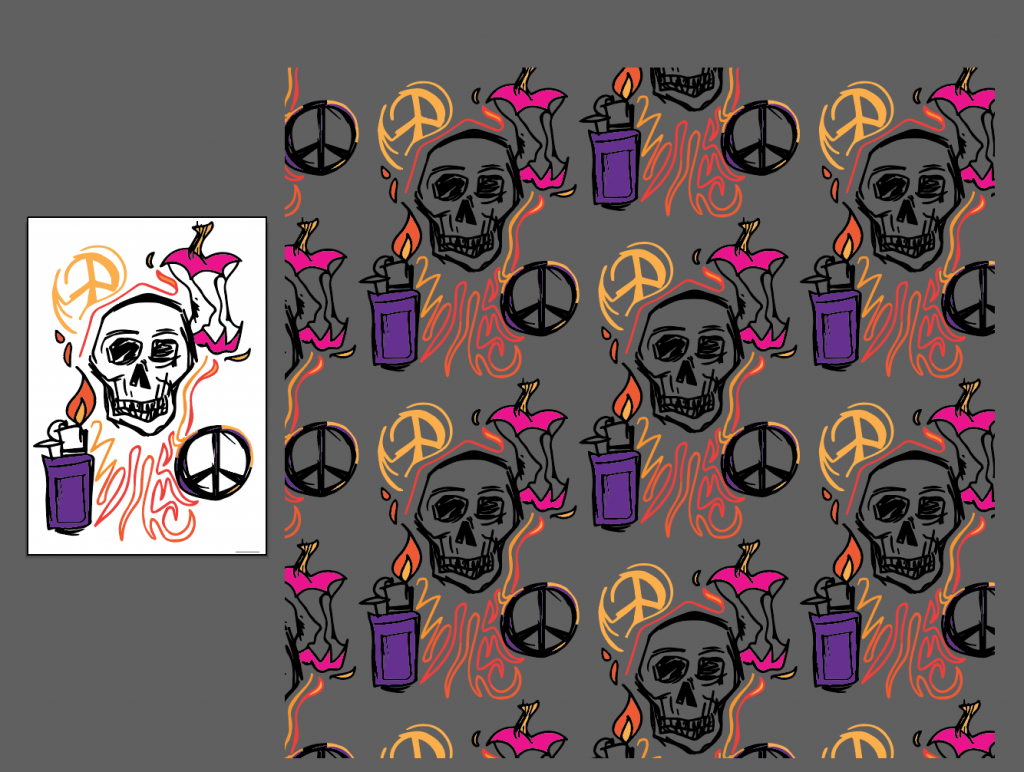
I did another quick sketch after taking a look around my apartment with fresh eyes. I wanted to experiment with adding color, and while there were many frustrations, I was able to correct for gaps and create a scheme that enhanced the pattern’s intensity. Choosing different primary colors for the corners of the swatch design added direction created more interesting planes of movement in the repeated pattern. As a wallpaper, I think this pattern would create a feeling that’s overwhelming, but as a throw pillow cover, it would go nicely with the pillows currently on my couch. I’m enjoying how patterns can be used to evoke different emotions and convey different energies.
]]>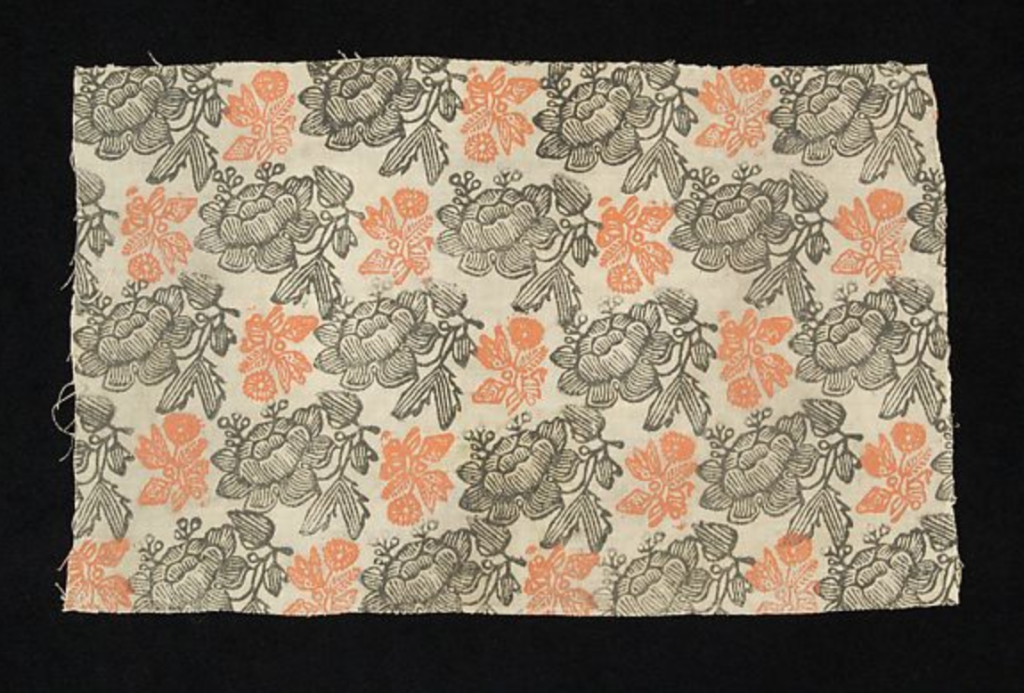
I was drawn to this textile because of the contrasting colors and diagonal orientation of the flowers. I think the shifted repeated pattern is interesting, and I enjoy the way my eye is able to move along the paths created. I was also engaged with this piece because the flowers appear to be stamped, and I love the handmade feeling.
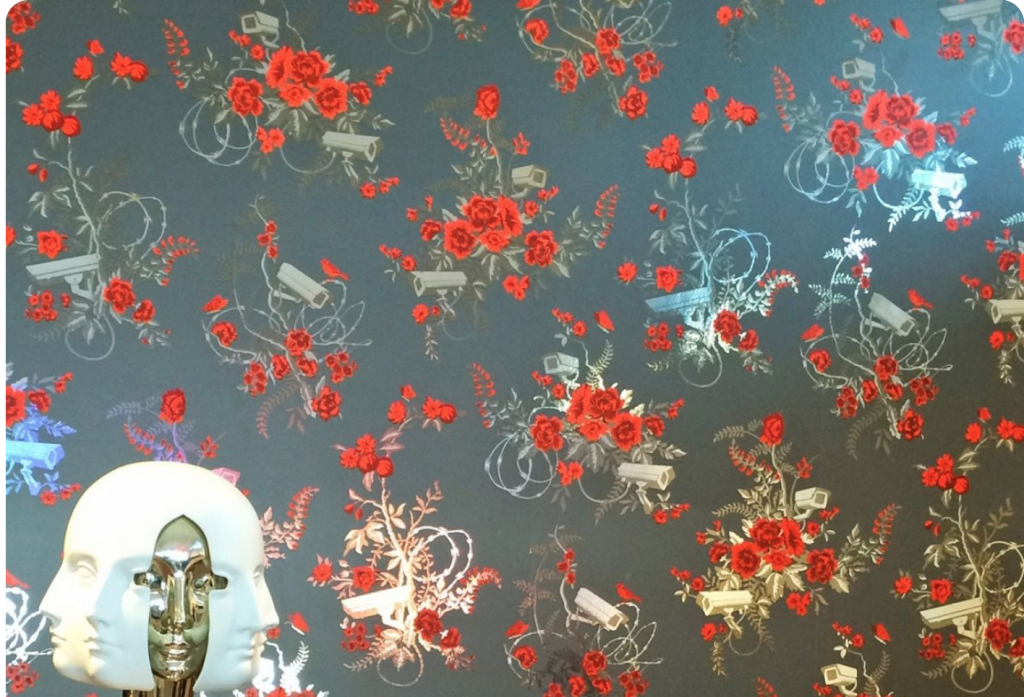
Link: https://www.flavorpaper.com/wallpaper/patterns/handscreened/vigilant-floral
This repeated pattern was captivating to me because it felt like a modern take on the Russian floral pattern I found. The repeated pattern is also offset at a diagonal that I appreciate, and I enjoy the elegant delicacy of the design. I like how the video surveillance cameras add an element of surprise that adds another layer to the pattern. Another surprising feature that pulls the floral pattern out of the traditional realm is the razor wire. Upon first glance, I assumed the razor wire was vines, but I like the added commentary to this design.
]]>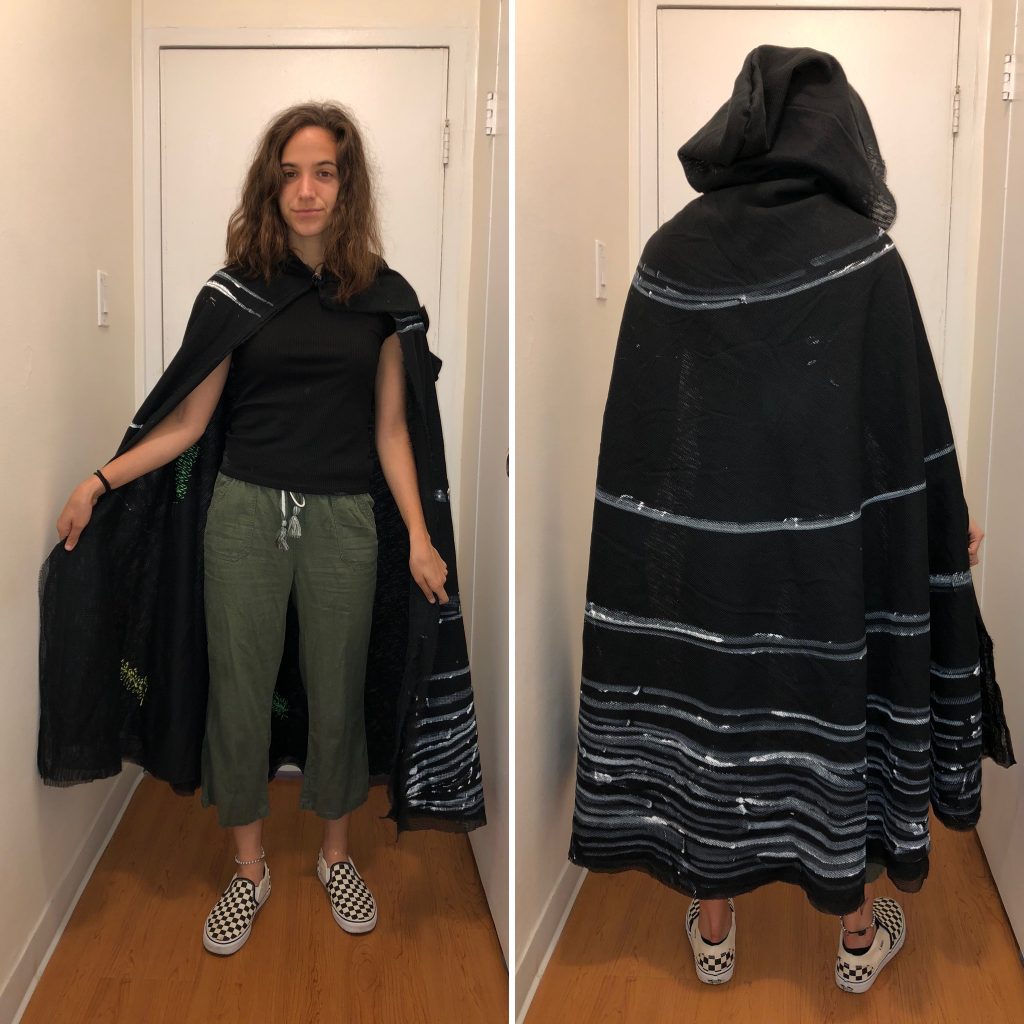
The outside of the cloak features stacked painted lines. The lines were somewhat difficult to paint due to the netted fibers, but I was able to create the gradient I was looking for. I used the spacing between the lines to symbolize rapid mass consumption. We consume everything at an unsustainably fast pace now, and this will ultimately lead to self-destruction. I also distressed the bottom of the cloak with scissors to show what happens when consumption habits exceed their boundaries.
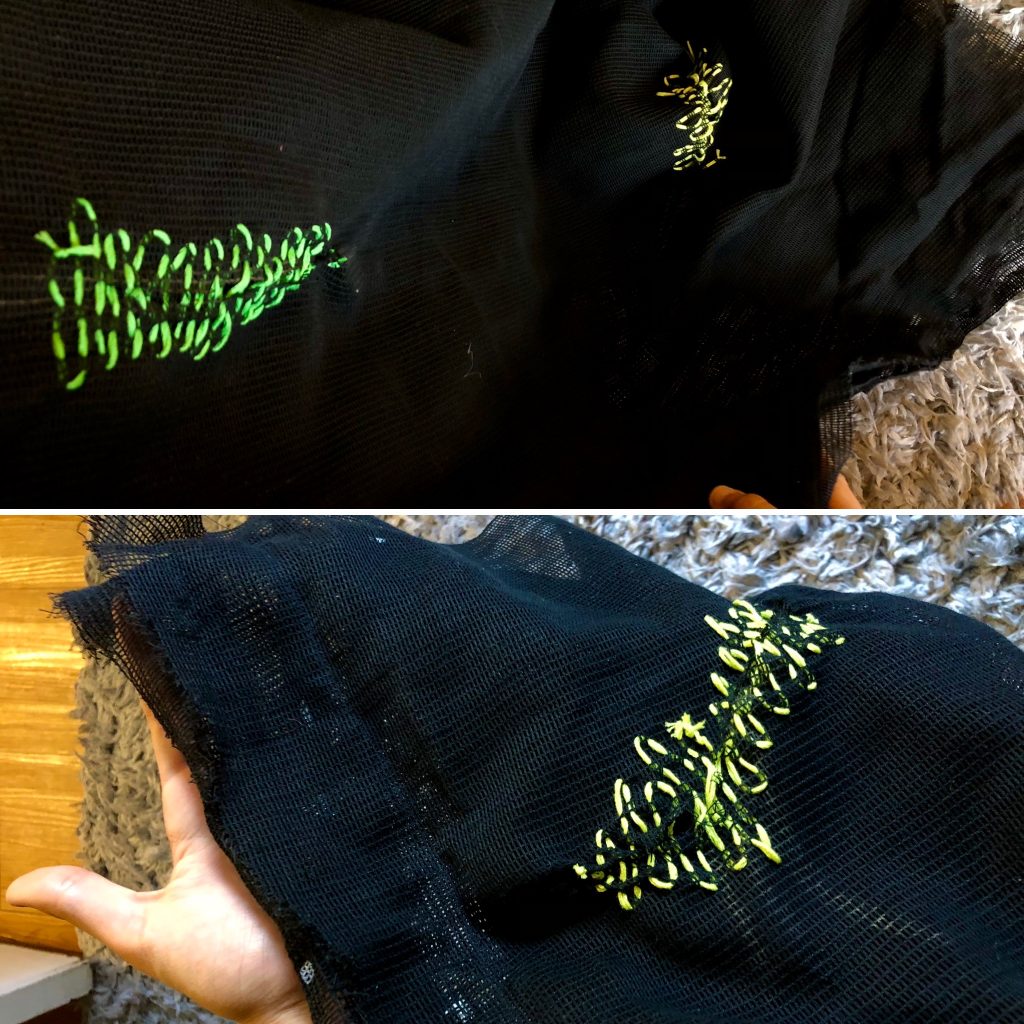
On the inside of the cloak, I decided to use mending as a way to represent patching old scars and transforming beliefs. I was surprised to see how the visibility of patches changed with my movements, and I liked how I could not quite keep them hidden. Overall, I like the regenerative message the mending sends.
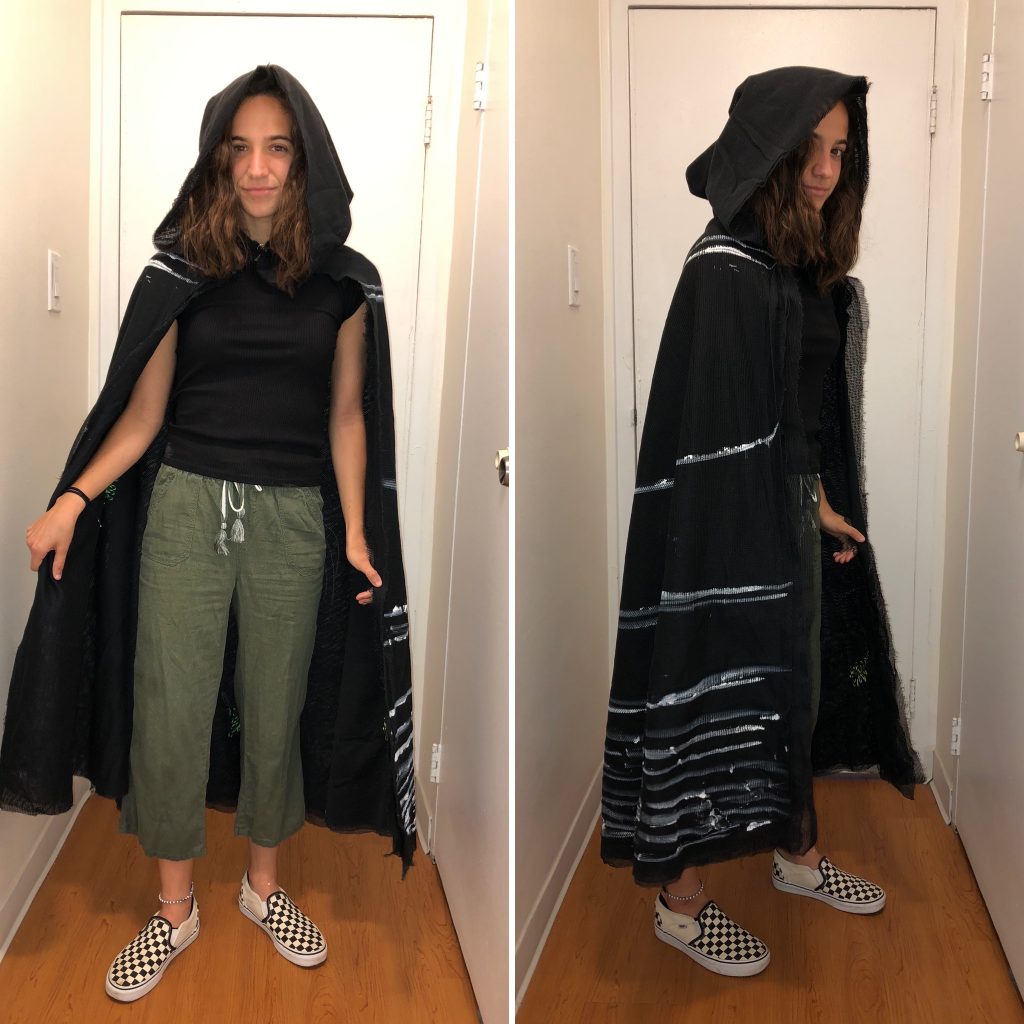
My biggest challenge was adapting to the material throughout the construction process. After making a trial cloak out of muslin, it was an adjustment to work with four layers of thin netted fabric. In order to give the cloak weight and bulk, I cut and sewed four layers together. I was pleasantly surprised that the thread was completely invisible because I was initially planning on doing french seams to combat that problem. It was difficult to find the right hood shape in the excess material, but I was able to construct one with the right dimensions to match the cloak’s neckline (this was something I failed to do with the muslin trial). It was a bit awkward to sew such a large volume of fabric together, but luckily I had enough pins to go around 
I’m still struggling with figuring out a way to tie and secure the cloak for wear. The ribbon I chose is actually pretty uncomfortable, so in order to make this more functional, I’m going to try an eye-and-hook closure.
]]>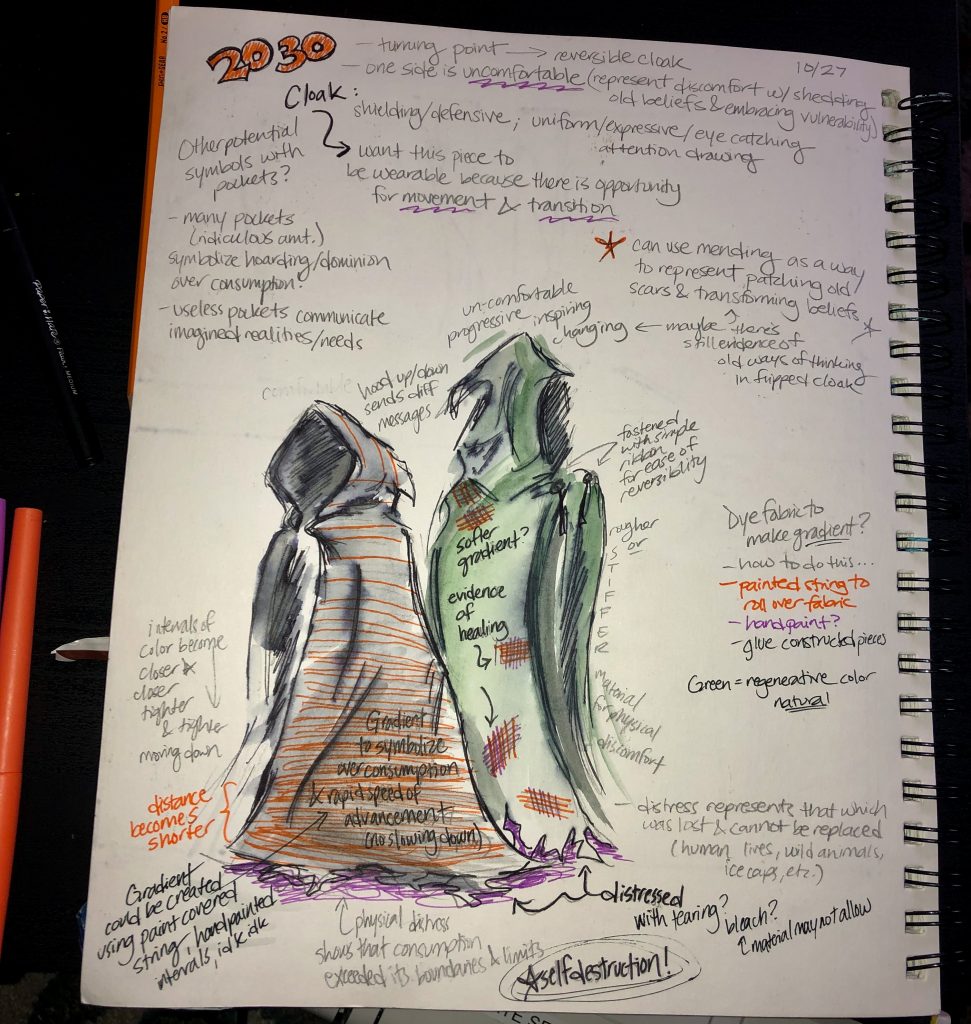
In 2030, the effects of climate change will still be felt heavily pronounced around the world, and the impact on industrial first world countries will bring more unrest but also more collective action is dismantling the system that currently allows mega-corporations to reign unchecked. There will be more jobs in clean energy, and people will be supporting sustainable practices in farming and fishing etc. The cultural shift in opinion around climate change will come with a transition in the public away from selfish and cynical ideologies towards upholding collective, generous, and attentive values. This transition will demand people to change their habits of consumption, and there will be continued resistance.
Mass consumption of media and resources is not sustainable, but technology continues to make things faster and shorten our attention spans. There is a great amount of distractibility in the media and pop science we consume now, and that can entertain illusions about reality. We’re often so distanced and desensitized to the media we consume, and we move on to the next trending topic without much further discussion. The pandemic has derailed our lives and shaken our sense of comfort, but the shutdown has also given us a chance to finally slow down, self-reflect, and realize just how vulnerable and dependent we actually are. In 2030, I’d like to imagine that excessive and rapid consumption is no longer the accepted norm. This will not immediately fix or magically undo all of the environmental and social damage, but more people will pick their heads up and pay attention to problems they have managed/chosen to avoid.
The scariest thing I can imagine for the environment in 2030, however, is nothing. We are such a future oriented society, and usually people only think about extinction as a process that wipes out an entire species in every age group at once. But in the age of fossil fuels, extinction can happen covertly when the first days of life become simply too difficult for the youngest members of a species to survive. In 2030, there are no corpses making flashy trending headlines, just increasing handfuls of nothing. All of life has the right to renew, regenerate, and heal itself, and while the idea of absence is terrifying to me, I can only hope that the weight of it all will show people just how reliant on nature we really are.

